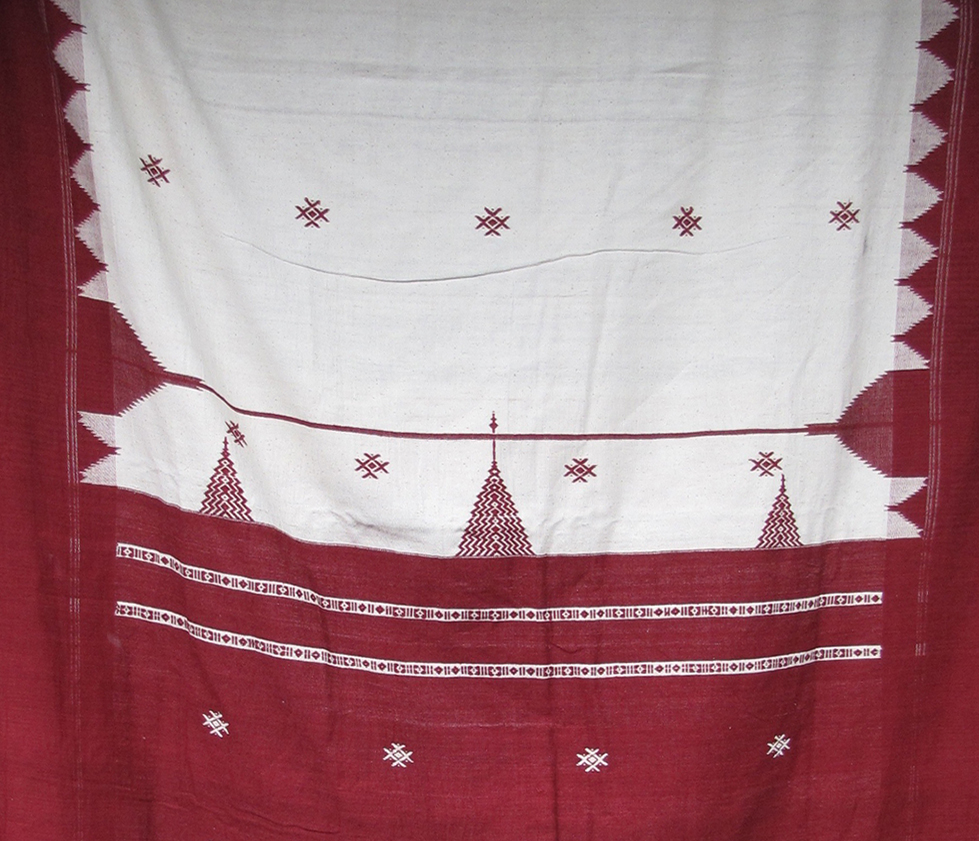Textiles & Crafts
Pata
State: Odisha, Chattisgarh
Craft: Extra weft and three shuttle technique
Material: coarse cotton, Natural dye
Textile Story: it refers to locally woven coarse textile in halbi language. Pata is a short length and
narrow width unbleached white or kora cotton woven with natural dye deep red border. The
unbleached white body is rendered with elaborate patterns such as mandir, bili khoj, inta ocha and
machli using extra weft technique inspired from local surrounding and nature. The temple border is
made using three shuttles. In earlier days textiles were used for everyday use and ceremonial use by
local people. Durua, Gond, Bhatra, Muria Adivasi and common people wore pata during rituals and
marriage ceremony. Some of the textiles such as tual (towel), nakki dhoti (cloth for men), chadar and
Mai luga Pata (ceremonial textile) were made by weavers for local people and Adivasis.
Process: the deep red colour is derived from the roots of acchu or al tree (Morinda Citrifolia,
Rubiaceae family). The process of natural dyeing process starts with castor oil and ash water
application on yarn followed with cow dung paste by hand and regular kneading with foot using ash
water for four weeks. Pre-treated yarn is soaked with al powder dye bath overnight and boiled at
high temperature on the next day. Panika women in Kotpad village have preserved the age old
tradition and they practice dyeing during the dye season.
Weavers: Pata is woven on pit loom and frame loom. A small population of Panikas weavers residing
in Bastar and Kotpad village in the border region of Odisha and Chattisgarh and a large population of
Dalit tanti and Meher weavers in Koraput and Nabarangpur are engaged in pata weaving.
Research Period: 2000, 2009-2010, 2015, 2017
Supported by: NTICVA (2009-10)
Research by Pankaja Sethi & visual documentation by Tanuja Sethi

